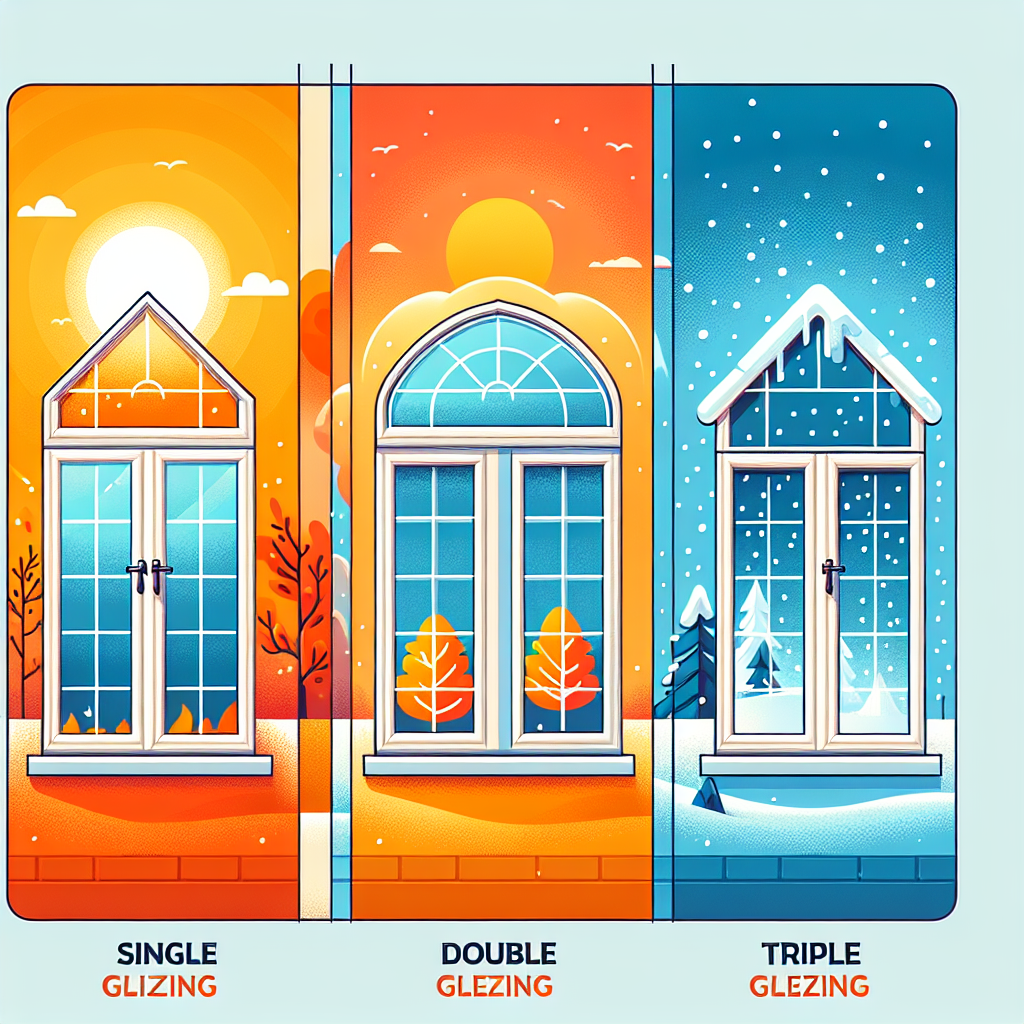When it comes to energy efficiency and comfort in homes, the type of glazing selected for windows and doors plays a crucial role. In this guide, we’ll explore the differences between single, double, and triple glazing, helping you make an informed decision based on your specific climate needs.
Understanding Glazing Types
Before diving into specifics, let’s clarify what we mean by single, double, and triple glazing.
Single Glazing
Single glazing consists of a single pane of glass. While it is often the most affordable option, it is also the least energy-efficient, making it more suitable for mild climates where heating and cooling costs are not a significant concern.
Double Glazing
Double glazing features two panes of glass with a space in between, typically filled with air or argon gas. This design provides better thermal insulation, making it a popular choice for residential buildings in varying climates.
Triple Glazing
Triple glazing takes energy efficiency a step further, incorporating three panes of glass. It is particularly beneficial in extreme climates, where maximizing insulation can lead to significant energy savings.
Temperature Considerations: Choosing the Right Glazing for Your Climate
Mild Climates
In areas where temperatures are generally mild, such as coastal regions, single glazing may suffice. Although it offers minimal insulation, many homeowners find that the cost savings outweigh the energy inefficiency.
- Advantages: Lower upfront costs, sufficient for moderate temperatures.
- Considerations: Higher heating/cooling bills in extreme temperatures.
Moderate Climates
For moderate climates, double glazing is often the best option. This provides a balance between insulation and cost-effectiveness. Homes in these regions can enjoy reduced energy bills while maintaining comfort year-round.
- Advantages: Improved thermal performance, enhanced sound insulation.
- Considerations: Slightly higher initial investment compared to single glazing.
Extreme Climates
In regions with harsh winters or scorching summers, triple glazing is the recommended choice. It offers maximum insulation, ensuring that homes remain energy-efficient regardless of external temperatures.
- Advantages: Superior thermal performance, significant energy savings.
- Considerations: Higher costs, potential need for stronger window frames due to weight.
Energy Efficiency: The Importance of U-Values
When comparing glazing types, one important metric to consider is the U-value, which measures the rate of heat transfer. The lower the U-value, the better the glass acts as an insulator.
- Single Glazing U-value: Generally around 5.0 W/m²K
- Double Glazing U-value: Approximately 2.0 W/m²K
- Triple Glazing U-value: Typically ranges from 0.6 to 1.2 W/m²K
As you can see, the investment in double or triple glazing can lead to significant savings on your energy bills in the long run.
Soundproofing Benefits: Choosing Based on Noise Levels
Another critical factor to consider is sound insulation. Homes situated near busy roads or urban environments may benefit from double or triple glazing, which can significantly reduce outside noise.
Single Glazing
While single-glazed windows can be noisy, they may suffice in quiet rural areas.
Double Glazing
Double-glazed windows are often designed to minimize sound transmission and are effective in moderate noise environments.
Triple Glazing
Offering the best soundproofing capabilities, triple glazing is ideal for homes in high-noise areas, providing a peaceful indoor environment.
Long-Term Investment: Will it Pay Off?
While double and triple glazing might present higher upfront costs, the long-term savings in energy bills, increased property value, and enhanced comfort levels make them worthwhile investments, especially in harsher climates.
The Cost Factor
- Single Glazing: Least expensive but carries ongoing energy costs.
- Double Glazing: Mid-range investment, moderate energy savings.
- Triple Glazing: Highest initial cost but excellent long-term savings.
Installation and Maintenance
Regardless of the glazing type you choose, proper installation is crucial to achieving optimal performance. Ensure you hire a qualified professional with experience in your specific window type to maximize efficiency and warranty coverage.
Maintenance Tips
- Single Glazing: Regular cleaning, periodic checks for cracks.
- Double Glazing: Inspect seals and frames for damage; clean between panes if necessary.
- Triple Glazing: Regular inspections are vital due to their weight and complexity.
Conclusion: Making an Informed Decision
Choosing the right glazing type for your windows is an important decision that affects not only your heating and cooling bills but also your comfort. In mild climates, single glazing may suffice; however, double or triple glazing is usually more appropriate for moderate to extreme climates.
At the end of the day, understanding your specific climate, energy needs, and budget will guide you in making the best selection for your home. Remember, investing in better glazing may cost more initially, but the long-term benefits in energy efficiency, comfort, and property value could vastly outweigh these upfront expenses.
For homeowners ready to enhance their living spaces while ensuring energy efficiency, the right glazing choice can be a game-changer. Happy window shopping!
Keywords:
single glazing, double glazing, triple glazing, energy efficiency, window insulation, climate specific glazing, soundproofing windows, U-values, home energy savings.


